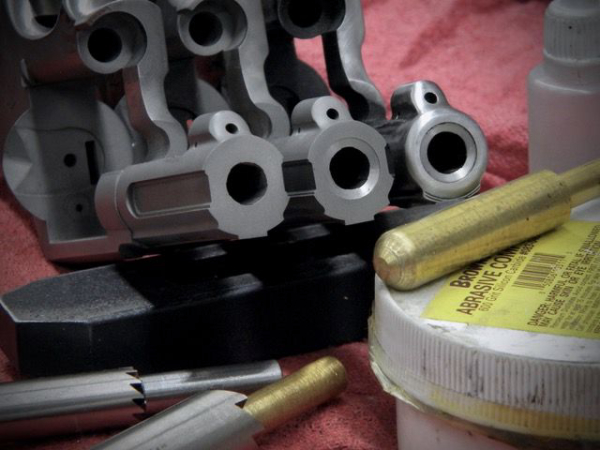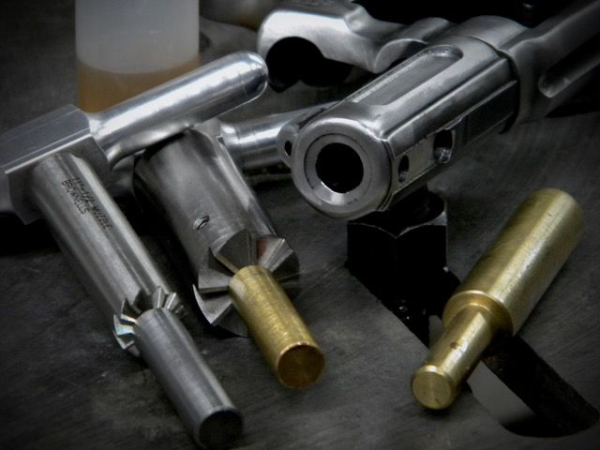For a firearm to shoot “accurately” – fill in your definition of accuracy – the bullet has to exit the barrel in a consistent path. A muzzle crown that’s cut equally and perpendicular to the barrel’s bore allows the gasses driving the bullet to escape evenly. Gas from a crooked, off-center crown or one that’s dinged or nicked will push the bullet off track as it exits the barrel. This is true for both long barrels and handguns. Ensuring the crown on your gun is correct is a fairly simple process.

The “crown” is the end of the barrel. The “muzzle” is the area surrounding the bore. Both are important. The crown must be square or perpendicular to the bore. The muzzle, the angle between the bore and barrel must be consistent, concentric and aligned to the muzzle. These angles allow the gasses to exit the barrel in a uniform fashion, improving accuracy. The muzzle can be cut square, ninety degrees to the bore or cut at an angle – eleven degrees is very common. My research and question asking has convinced me the exact angle doesn’t matter, as long as it’s true.
Yes, this is done by the factory; most factory barrels can be improved on. In the field, the muzzle of your revolver could get dinged up on a rock. High velocity rounds in your rifle will eventually erode the end of the bore; it’s time to clip a little off the barrel and cut a new muzzle and crown. Or, you want to cut a “recessed” crown, a second crown inset into the original that helps prevent the muzzle from damage.
Regardless of the reason, ensuring your crown and muzzle are correct, or cutting new angles can be done by hand. Plus, it’s not that expensive to get into the crowning business. Brownells sells everything you need as a kit to get you started, and individual components to add to your collection.

Cutters for squaring the muzzle and creating the perfect crown come in a variety of sizes and angles. A caliber specific brass pilot goes in the barrel to keep everything aligned with the bore. It’s attached to the cutter, and a “T” handle screws onto the other end of the cutter. (Pilots and handles can be swapped between cutters.). Use plenty of cutting oil, and apply light pressure while turning in a clockwise only direction. Remove the setup constantly to clean metal shavings from cutter and barrel and re-oil. This ensures a smooth cut, and extends the life of the cutter.
Start by squaring up the muzzle, then switch cutters to cut the crown. Final cleanup is done with a round-tip brass tool mounted in a hand-drill and lapping compound. The same process is used with handguns and long barreled firearms. With the proper tools, time and patience this is a task anyone can perform.
Accuracy depends on consistency. This is true for the shooter and the firearm. Make sure both are well maintained.
Tiger McKee is director of Shootrite Firearms Academy. He is the author of The Book of Two Guns, AR-15 Skills and Drills, has a regular column in American Handgunner and makes some cool knives and custom revolvers. Visit Shootrite’s Facebook page for other details.